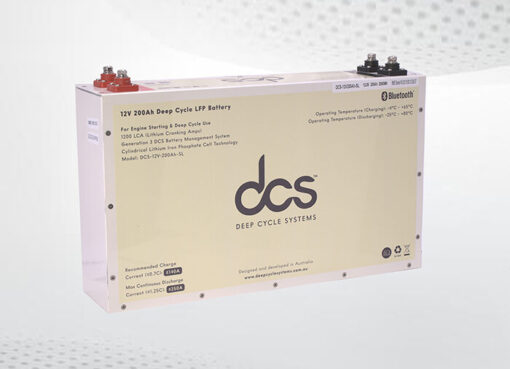DC to AC Inverters: Essential Power Conversion Technology

In modern electrical systems, the need for efficient and reliable power conversion is critical. One of the most essential devices in this regard is the DC to AC inverter. Inverters play a crucial role in a variety of applications, from renewable energy systems to portable power solutions. This article explores the working principles, types, and applications of DC to AC inverters, shedding light on their significance in today’s power conversion landscape.
What is a DC to AC Inverter?
A DC to AC inverter is an electronic device that converts direct current (DC) electricity into alternating current (AC) electricity. Inverters are pivotal in situations where the power supply is available only in DC form, such as in solar power systems or battery-operated devices. The AC output from the inverter is what is typically used to power household appliances, industrial machinery, and various types of equipment.
How Do DC to AC Inverters Work?
The conversion from DC to AC involves a series of steps. Initially, the inverter takes the DC input and uses an oscillator to produce a high-frequency signal. This signal is then fed into a power electronic component, typically a transistor, which modulates the signal to generate an AC waveform. The inverter can produce different types of AC waves, such as square waves, modified sine waves, or pure sine waves, each suited for specific applications.
The inverter’s role is not just about converting DC into AC; it also controls the frequency and voltage of the output. In standard AC electrical systems, the voltage is typically 120V or 240V, depending on the region, and the frequency is either 50 Hz or 60 Hz. The inverter ensures that the output matches these parameters, making it compatible with household and industrial electrical systems.
Types of DC to AC Inverters
While all inverters perform the same basic function—converting DC to AC—the way they do it can vary significantly. There are three main types of inverters based on the waveform of the output:
1. Square Wave Inverters
Square wave inverters are the simplest and most basic type of inverters. These devices produce a square waveform output, which consists of sharp transitions between positive and negative voltages. While these inverters are inexpensive and efficient for small applications, the square wave output is not ideal for sensitive electronics or most household appliances.
Advantages:
- Low cost
- Simple design
- Ideal for resistive loads like incandescent bulbs
Disadvantages:
- Produces poor quality power
- Not suitable for sensitive equipment
- Causes more wear and tear on electrical devices
2. Modified Sine Wave Inverters
Modified sine wave inverters produce a waveform that is a step-up from the square wave. The output is a series of stepped approximations of a sine wave. While these inverters offer better efficiency than square wave inverters, they are still not ideal for all applications. Modified sine wave power can cause humming or buzzing sounds in motors and lead to heating in some electrical devices.
Advantages:
- More efficient than square wave inverters
- Works with most household appliances and power tools
- Less expensive than pure sine wave inverters
Disadvantages:
- May cause issues with sensitive electronics
- Not suitable for complex devices like medical equipment or audio equipment
3. Pure Sine Wave Inverters
Pure sine wave inverters provide the highest quality output, mimicking the AC power supplied by utility companies. These inverters create a smooth, continuous sine wave with no distortion. Pure sine wave inverters are ideal for all applications, particularly for sensitive electronics and high-end appliances, such as computers, medical devices, and audio equipment.
Advantages:
- High-quality power output
- Suitable for all types of appliances, including sensitive electronics
- Efficient operation with minimal heat production
Disadvantages:
- Higher cost compared to square wave and modified sine wave inverters
- More complex design
Applications of DC to AC Inverters
DC to AC inverters are used in a wide range of applications across various sectors. Some of the most common applications include:
Solar Power Systems
One of the most widespread uses of inverters is in solar energy systems. Solar panels generate DC electricity, but the electricity grid requires AC to distribute power to homes and businesses. A DC to AC inverter in a solar power setup converts the DC output from the solar panels into AC, making it usable for general electrical needs. This also allows excess power to be fed back into the grid in many areas, providing economic benefits for solar system owners.
Uninterruptible Power Supplies (UPS)
Inverters are essential components in uninterruptible power supplies (UPS) systems. These devices provide backup power during electricity outages. A UPS typically uses a battery to store energy in DC form. When the main power supply fails, the inverter converts the stored DC into AC to keep critical systems running, such as computers, servers, and medical equipment.
Electric Vehicles (EVs)
Electric vehicles (EVs) also rely on inverters for their operation. EVs use batteries that provide DC power, but the vehicle’s motor requires AC power to operate efficiently. Inverters are used to convert the DC power from the battery into the required AC, ensuring that the motor runs smoothly and efficiently.
Off-Grid Power Systems
In remote or off-grid locations, DC to AC inverters are used in power systems that rely on batteries, wind turbines, or solar panels for energy generation. These systems require inverters to make the power usable for typical household applications, such as lighting, heating, and powering appliances.
Powering Household Appliances
Inverters are also commonly used in recreational vehicles (RVs), boats, and camping setups to power household appliances. In these instances, inverters convert the DC power from batteries into AC to operate devices like refrigerators, microwaves, and televisions.
Conclusion
DC to AC inverters are indispensable in the modern world, providing power conversion solutions for everything from solar energy systems to backup power supplies and electric vehicles. As technology continues to advance, inverters are becoming more efficient, affordable, and versatile, opening up even more possibilities for their use across various industries. Whether it’s ensuring a constant power supply for your home or enabling the operation of renewable energy systems, DC to AC inverters are central to ensuring that electrical power is available and reliable wherever it’s needed.



Leave a Comment